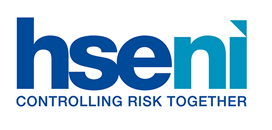Key industry stakeholders and NGOs played an important role in the development of the European CLP Regulation.
It is important that industry and others continue to work alongside HSE so that the classification system continues to evolve to reflect the needs of users and suppliers, to work efficiently to protect health and the environment and to ensure businesses are not placed under undue burden by classification requirements.
There are a number of ways you can keep informed about and get involved in the development of the classification system.
Background
In 2007, HSE invited interested stakeholders to help consider the proposed CLP Regulation to inform and develop the UK’s negotiating position. The result was a group which represented a wide range of parties interested in chemical classification and labelling from manufacturers and importers to downstream users and end users.
The productive work done at this time prompted HSE to continue to seek the views of these stakeholders and to expand the network. The GHS Stakeholder Group was subsequently established.
To begin with, the Group focused on proposed changes to the GHS classification criteria helping HSE to develop positions for the formal UN GHS meetings (UN Sub-Committee of Experts on GHS – UNSCEGHS). Changes to GHS will be incorporated into the CLP Regulation so this level of early involvement and influence is important and could be beneficial to the UK/EU market/interests.
Developments
More recently, the Group has started been invited to help HSE develop impact assessments for proposed changes, as well as being invited to respond to ECHA’s public consultations on proposed CLHs.
The GHS Stakeholder Group meets twice a year (June and November) immediately prior to the meetings of the UN Sub-Committee of Experts on GHS (UNSCEGHS) held in Geneva in July and December each year.
The Group is invited to comment on all the issues tabled for the UNSCEGHS meetings, either in formal working papers or information papers. All UN papers are fully open to encourage transparency in how the GHS is to be developed.
Documents can be viewed here:
The GHS Stakeholder Group has proved to be very successful and a considerable asset to HSE in developing responses to proposals for chemical classification and labelling.
Proposals for harmonised classifications
A harmonised classification is a classification for a substance that has been agreed by independent experts at European level and endorsed by EU Member States. About 8000 substances have been assigned harmonised classifications.
A harmonised classification is legally binding and suppliers are obliged to use these classifications. The list of harmonised classifications appear in Part 3 of Annex VI of the CLP Regulation.
Risk Assessment Committee
Proposals for harmonised classifications are made by the Risk Assessment Committee (RAC) of the European Chemicals Agency (ECHA). RAC’s members are experts in chemical classification and have the extensive scientific knowledge to consider carefully the available data and information. The members act independently and do not represent any particular member state or organisation. This is to ensure the transparency of the decisions being made.
More about the Risk Assessment Committee can be found here:
Public consultations
Once RAC has come to a decision, it publishes its opinions and asks for comments through public consultations which usually run for 45 days. RACs opinions are published on the ECHA web site. Comments should be submitted directly to ECHA/RAC. If agreed to, these classifications will enter into legal force through an amendment to Annex VI of the CLP Regulation.
Each proposed harmonised classification is subject to public consultation (usually lasting around 45 days) arranged by the European Chemicals Agency (ECHA). HSE encourages those affected by such proposals to consider them carefully and to provide comments directly to ECHA.
Those in industry with an interest in chemical classification should ensure they check RAC’s public consultations regularly to ensure they are kept up to date especially if substances they place on the market are affected.
The GHS/CLP Stakeholder Group is alerted to these proposals, together with details of the public consultation arrangements.
More information on RAC’s work on harmonised classification and labelling and links to public consultations, can be found here:
UN GHS Sub-Committee (UNSCEGHS)
The UN GHS is the responsibility of the Sub-Committee of Experts, known as the UN SCE GHS. HSE represents the UK at these meetings.
The Sub-Committee:
- Acts as custodian of the Globally Harmonized System of Classification and Labelling of Chemicals (GHS), managing and giving direction to the harmonization process;
- Keeps the system up to date, as necessary, considering the need to introduce changes to ensure its continued relevance and practical utility, and determining the need for and timing of the updating of technical criteria, while working with existing bodies, as appropriate;
- Promotes understanding and use of the system and encourage feedback;
- Makes the system available for worldwide use and application;
- Makes guidance available on the application of the system, and on the interpretation and use of technical criteria to support consistency of application;
- Prepares work programmes and submit recommendations to the Committee on the Transport of Dangerous Goods and the Globally Harmonized System of Classification and Labelling of Chemicals (CETDGGHS).
You can view current and archive papers considered at UN GHS meetings here. All papers are fully open:
If you want to contribute to any of the discussions or issued raised at the Sub-Committee, please contact HSE.
